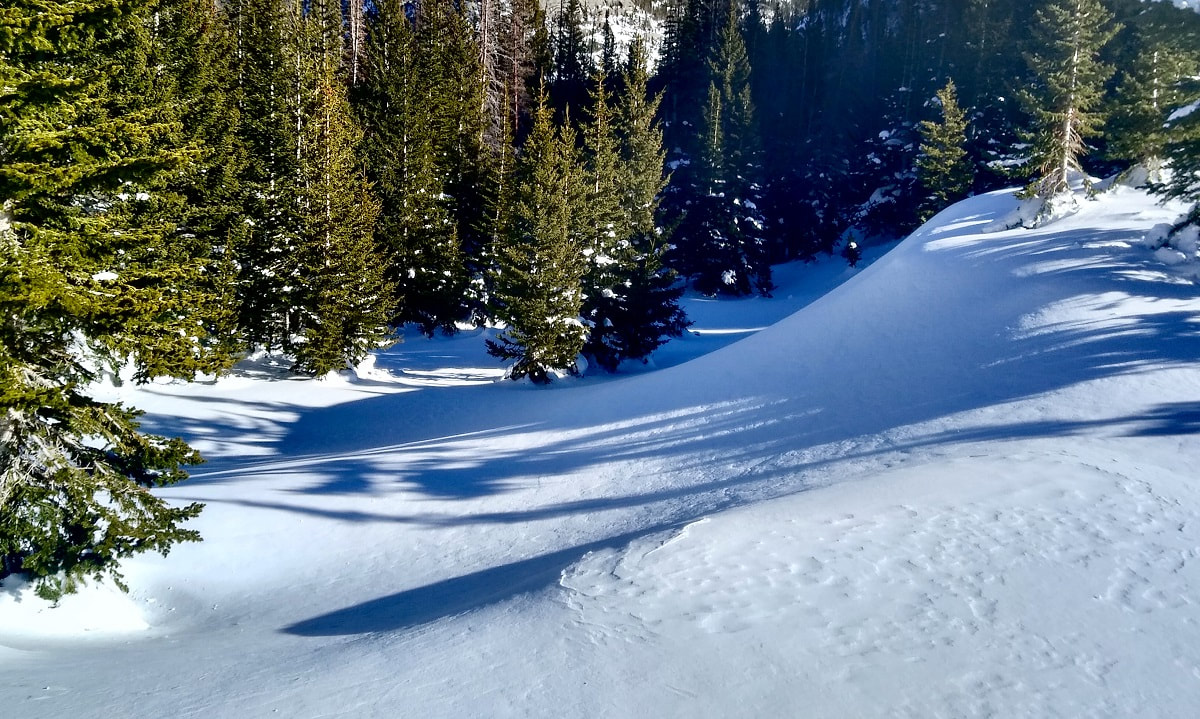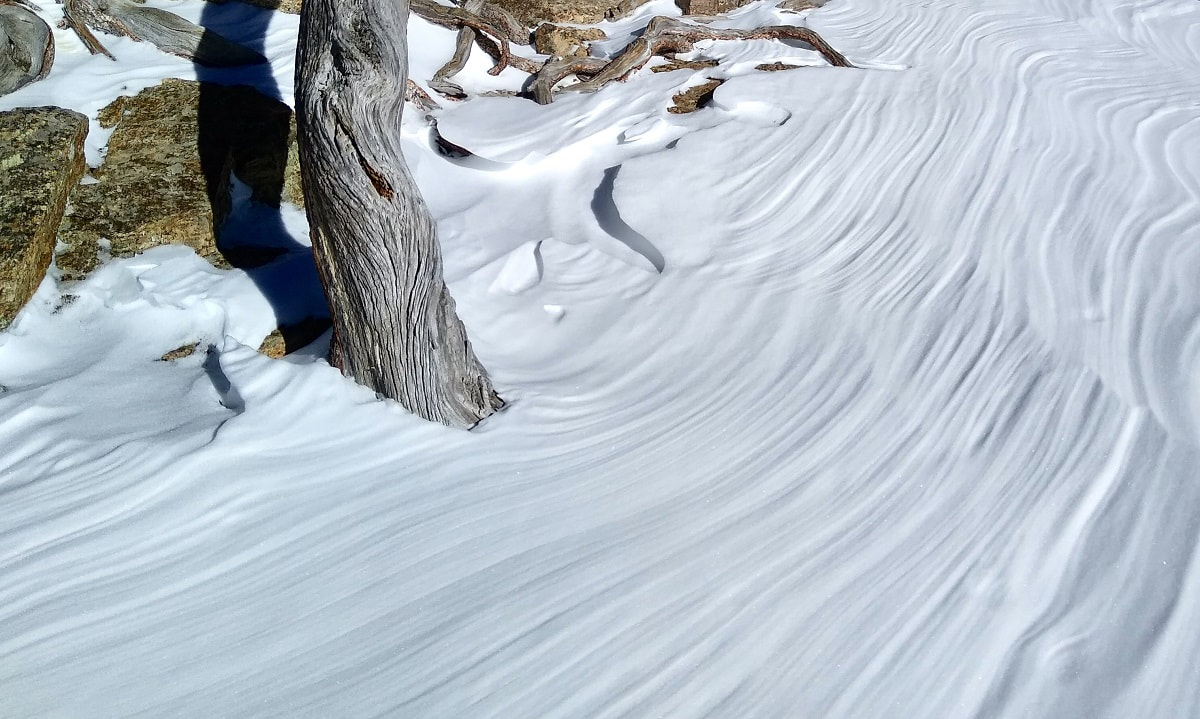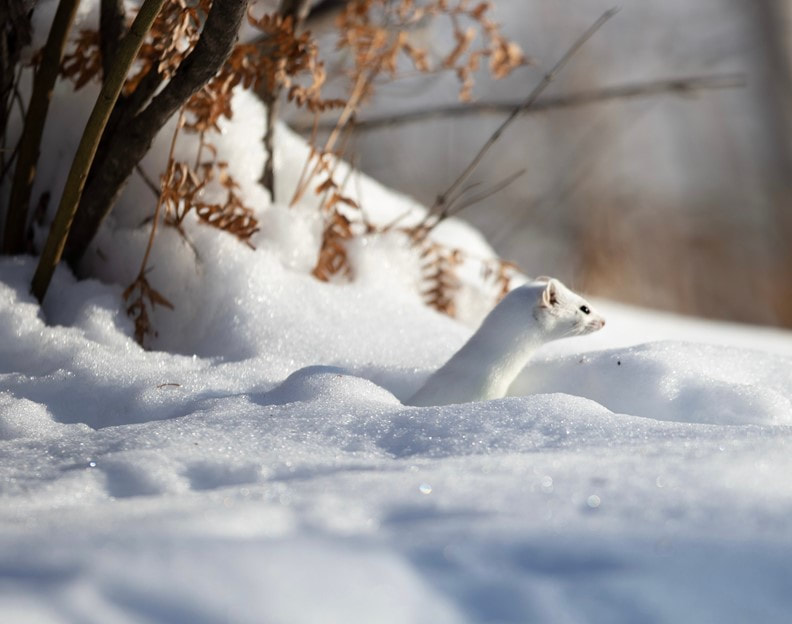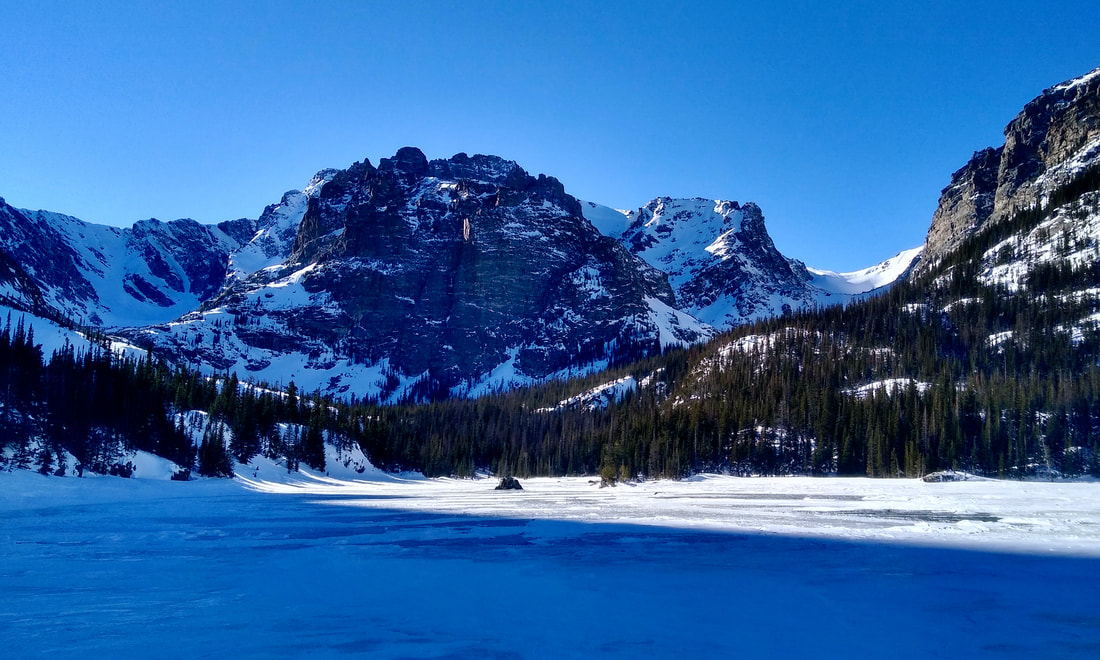|
editor's note: this story is pulled out in its entirety from the February/March edition of HIKE ROCKY digital magazine. For more information about the magazine visit this page by Dave Rusk I had been crunching snow for a good thirty minutes. There were others on the trail before me, but the trail was not very packed down. I passed a few people returning from their journey who expected the trail would be easier to walk on, wishing they had snowshoes. We stopped to visit for a bit, then I crunched on, through the aspens and pines. I looked over the overlook to Glacier Creek, and then pressed on to Alberta Falls, now entirely snowed under. There I pause briefly. It is mid-afternoon and the sun is casting rays through perfectly blue skies. The temperature is comfortable and cool. No one has ventured down into the creek through the fresh snow to snap pictures of the hidden falls so I took a pass at that, too. I stepped back on the path and continued my meander through the frozen Loch Vale to the Loch, with the sound of cold snow crunching under my snowshoes. I rounded a few bends into a clearing and then paused again, turning toward the vista to the north of the distant Mummy Range. I noticed the silence around me. It isn't a deathly silence but a silence of stillness. Something about the snow makes the quiet more silent than in the summer. It is as if the snow has absorbed all sound. But the most notable sound that is missing is the wind, moving through the pines, sometimes as a drifting breeze moving caressingly between the needles, but more often as a raging roar crashing down from the Divide. But on this day I notice that it is so calm nothing dare moves, not even a flit from a mountain chickadee or a dark-eyed junco. Everything is taking a pause in the stillness, nothing wants to disturb it. I gazed silently at the long winter blue shadows casting patterns on the white canvas snowscape, imagining that even those in the subnivean zone are pausing and taking in the quiet sound of the stillness. I turned and began to crunch my way around the glacier knobs. In this zone, mice and voles and shrews make their winter home with tunnels and pockets and rooms that are connected to the world above by narrow shafts breaking to the surface. Tiny little tiny paw prints radiate visibly across the snowscape from little round entrance holes. The subnivean zone is their cozy winter protection from the harsh and brutal winter of the above world. As the first snows of winter begin to fall, pockets of air are created by overhanging rocks and sturdy plants drooping over. These create a network of canopies while furry little critter balls huddle up and let the snow surround them. In these early snows, the ground in some places radiates enough warmth, in a process called sublimation, that it melts the snow into a gap of water vapor which then freezes to form an icy, crystal roof. No doubt, the warm bodies of these small inhabitants, scurrying through their tiny tunnels under the snowpack, quickly melts and freezes the ceiling and walls of their protective tunnels each time they go from room to room. No matter how cold and harsh the outside world becomes, life in the subnivean zone maintains a steady 0-degree celsius temperature, sufficient for winter survival, if not occasional comfort in a nest of dried grass and downy feathers. It would be understandable if these furry little creatures, scurrying about from nest to food storage to tea room, might become complacent, when out of nowhere the nose and teeth, or griping claws of a predator, suddenly come crashing through their crystalized roofs, bringing with them the cruel, harsh reality of the world above. The ermine, pretending to be so cute in its snowy white fur coat, flicking its black tip tail back and forth, quickly slithers down an open-air shaft, with hungry teeth gnashing for a meal. No doubt cautious mice and voles freeze in their cute little tracks if they hear anything overhead, doing whatever they can to survive until spring. With a fair amount of effort, I climbed my way out of the winter trail that follows up Icy Brook, topping out at the Loch. There, in a rare day of no wind, I gazed up to Andrews Glacier, basking in late-day sun, and then glanced left around the Taylor Peak massif to Taylor Glacier, which has spent its day in the cold shadows of Powell Peak. I admired the contours of the wind- sculptured snow around the edge of the frozen lake shore and take note of the last winter sun about to drop behind Taylor Glacier, knowing that when it does drop behind the ridgeline, so will the temperature. I take a break on the rocks on the eastern shore of The Loch to appreciate the calm of the day. Then I headed back down the narrow open shaft of my life and back into my own little protective subnivean zone. References: https://www.nps.gov/romo/learn/education/upload/Winter-Ecology-Teacher-Guide-for-web.pdf tetonscience.org walkingmountains.org 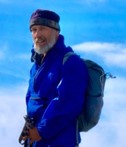 Dave Rusk has been sauntering and taking photographs through Rocky Mountain National Park for decades. He is the author publisher of Rocky Mountain Day Hikes, a book of 24 hikes in Rocky, and the website of the same name. He is the publisher of HIKE ROCKY Magazine and an important content contributor to all of these endeavors.
2 Comments
rmdh
5/15/2025 09:00:03 am
I don't often think to look for them, but those little critters are everywhere and it is not hard to fine signs of them. Even though most of the activity is below the snow surface, they have places that pop up above ground. Thanks for reading!
Reply
Leave a Reply. |
Categories
All
|
© Copyright 2025 Barefoot Publications, All Rights Reserved

